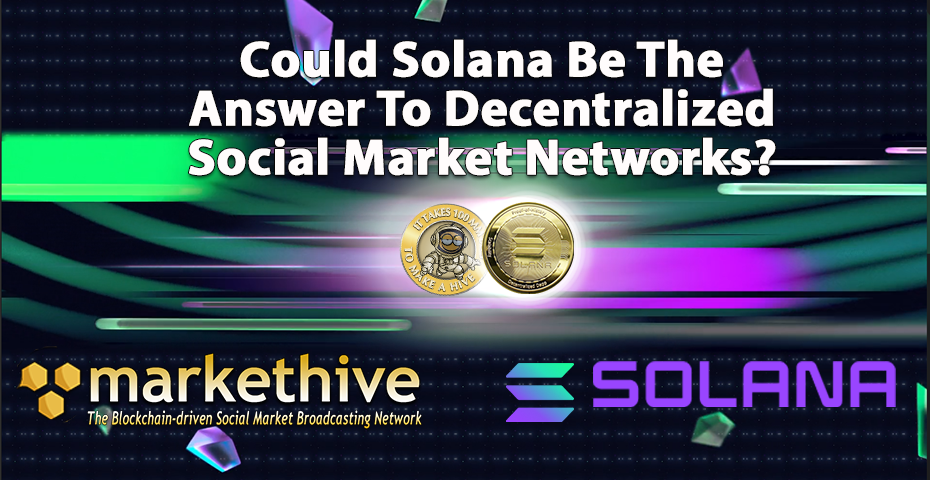


Image Source: Pixabay
Before Building the Metaverse, Blockchain Needs an Operating System
Blockchain needs an operating system, to provide a visual metaphor that everyone can understand and operate, argues Peer CEO Tony Tran.
Understanding what the metaverse is starts with understanding what the metaverse is not.
The metaverse is not an enclosed environment with strict rules and guidelines. It’s not a specific destination. The metaverse is not virtual reality and it’s not a video game.
“The metaverse is akin to cyberspace,” said Tony Tran, founder, CEO, and president of Peer, a startup building the blockchain-powered technology necessary to enable mass adoption of the metaverse.
Just like cyberspace isn’t a specific place, the metaverse is notional—a metaphor, he said.
“We think of the metaverse as a precursor to what we’re calling the ambient web, an extension of today’s web that is mapped to the real world,” Tran told Decrypt. Read More
DexGuru Hands Power to its Users With ‘Bootstrap’ DAO Launch
DeFi trading terminal DexGuru is taking a novel community-first approach to launching its Decentralized Autonomous Organisation.
The grand vision for Decentralized Autonomous Organisations (DAOs) is of industrious, utopian communities owned and managed by their members, with each individual having a voice in how assets are allocated and how things are run.
But the sad truth is that DAOs often start out centralized; in many cases, key decisions have already been made by the DAO’s core team well before the bulk of its members even join. But there’s a change in the air.
One soon-to-be-launched DAO is determined to remedy the situation, ensuring that its 10,000-strong community will be involved in key decision-making from the outset. It’s being launched by the community of DexGuru, a popular trading and analytics platform, and its members will be able to influence the shape of GuruDAO—and accompanying token—even before they launch.
DexGuru contributor Nick Sawinyh told Decrypt how the newly-formed organization will embody the true principles of decentralization—and why that’s so vital for the future of DAOs. Read More
Central authorities have demonized privacy — Crypto projects must fight back
While a core tenet and source of pride among crypto projects, privacy has been demonized by those in power, including lawmakers, regulators, banks, and academics.
Zcash (ZEC), a privacy coin that launched in 2016, unveiled an upgrade to its system on May 31 that will allow users to more easily make private, trustless digital cash payments on mobile phones. Not everyone would view this as a good development.
The unfamiliarity, uncertainty, and public intrigue surrounding privacy — including its complexity, misuse, and speculative activity — presents a number of challenges and reputational issues for innovating crypto projects. While a core tenet and source of pride among crypto projects such as Zcash, privacy has been demonized by those in power, including lawmakers, regulators, banks, and academics.
Yet, frequent hacks and data breaches show that the need to protect individuals’ privacy is more essential than ever. It’s here where crypto firms can enter the conversation and advocate for these vital consumer protections through the use of privacy-focused projects. Read More
What are investment DAOs, and how do they work?
Investment DAOs where crypto-rich buyers team together to back startups or make investments work based on governance rights enforced through smart contracts.
A decentralized autonomous organization (DAO) that raises and invests capital into assets on behalf of its community is an investment DAO. Investment DAOs tap into the power of Web3 to democratize the investment process and make it more inclusive.
DAOs can have their units in tokens that are listed on a crypto exchange. The community rules are agreed upon and governance is enforced through smart contracts. Governance rights (voting) can be prorated based on the holdings in the DAO.
A decentralized organization that invests in cryptocurrencies, real estate, nonfungible tokens (NFTs), or any other asset class has several functional differences from traditional investment vehicles. This is particularly true when the underlying investment opportunity is a crypto startup company. DAOs investing in startups differ fundamentally from traditional venture capital (VC).
Before elaborating on the differences between traditional VC and investment DAOs, let us understand how traditional venture capital works. Read More

Because of Solana’s POH method, it can horizontally scale the rest of the blockchain, the same way that operating systems and databases scale their software. Each Solana team member has over a decade of experience working in operating systems GPU acceleration. Compilers, networks, etc., giving them extensive and deep experience optimizing software.
Solana is based on scaling software with hardware, with the vision of building the world's largest decentralized, single chart blockchain. The only way to do that is by scaling all the core technologies with hardware.
Scaling the Blockchain in this way delivers a cheap cryptographic base for financial transfers and, more importantly, outside of finance. It is a way for Solana to build a better web experience for social media communities regarding micropayments.
Also, advertising-based revenues can be relinquished for social networks, leading communities to generate value by self-expression, creating their own content, and growing the network and the connections within the community, creating a better world for all. Read More
Helium Crypto Wireless Network to Launch New Tokens Amid Expansion
Even more protocols besides IoT and 5G could be offered by Helium as it readies a new “network of networks” approach.
Helium will launch new MOBILE and IOT tokens as it expands its crypto-powered wireless network.
The token-incentivized network may also expand to include additional decentralized protocols.
Helium's novel concept—standing up a wireless network for sensors and trackers that is powered by token-rewarded node operators—has earned significant support. Nova Labs, the recently-renamed startup that represents Helium’s founders, announced today that the network will launch new crypto tokens tied to individual networks.
The shift to a new model comes as Helium attempts to expand its offerings with 5G connectivity and more.
The existing HNT token will continue to exist and serve as something of a “reserve currency” or “floor currency” for the expanding Helium ecosystem, Nova Labs CEO and co-founder Amir Haleem told Decrypt.
Meanwhile, Helium will first launch a new MOBILE crypto token this month, which will reward people who operate a 5G node and contribute coverage to Helium’s latest network.
Early adopters who run 5G nodes—there are about 5,000 of them, Haleem estimated—are not currently being rewarded for providing coverage for devices like phones and laptops. That will change once the MOBILE token is live, ahead of Helium’s plans to rapidly scale the 5G network as hardware partners like FreedomFi seek to lower prices for the nodes. Read More
Scientists claim to have designed a fully decentralized stablecoin pegged to electricity
The E-Stablecoin would require several scientific advancements that are already in the works, and would allegedly make it possible to transmit electricity almost for free.
Researchers at the federally funded Lawrence Livermore National Laboratory in California have combined statistical mechanics and information theory to design a class of stablecoin dubbed the Electricity Stablecoin (E-Stablecoin) that would transmit energy as a form of information. Livermore’s Maxwell Murialdo and Jonathan L. Belof say their innovation would make it possible to transmit electricity without physical wires or a grid and create a fully collateralized stablecoin pegged to a physical asset – electricity – that is dependent on its utility for its value.
According to the scientists, the E-Stablecoin would be minted through the input of one kilowatt-hour of electricity, plus a fee. The stablecoin could then be used for transactions the same way as any stablecoin, or the energy could be extracted by burning it, also for a fee. The entire process would be controlled by smart contracts with a decentralized data storage cloud. No trusted centralized authority would be needed to maintain or disburse the asset.
This would be a first for a hard-pegged stablecoin, being directly exchangeable for a specified quantity of a physical asset, the scientists said. They suggested that electricity has a highly stable price and demand, and the electricity used in minting E-Stablecoins would be easily sustainable. Investors would be able to mint E-Stablecoins in regions where electricity prices are low and burn the tokens where electricity is more expensive. Read More
Scalable blockchain network provides foundation for more secure, stable coding for developers
Blockchain displays another use case in its support for developers, with releases that support automation and simplified workflows without a single point of control.
Git open-source repositories are a popular method for storing code. Unfortunately, a high degree of centralization means there's a single point of control — sparking fears about the prospect of censorship resistance and security. And as more code is written, it can become less secure.
Solutions are now being developed for the teams who manage these open-source repositories — with decentralized autonomous organizations sometimes tasked with building consensus around a code. They can encourage and incentivize developers to look at the code and attest to its security.
The technology of Everscale Network, a layer one blockchain recognized for its stability and high performance, directly solves this gap with a decentralized on-chain git source holder, better known as GOSH, developed by EverX, Pruvendo, KWPC, and Blockchain Family. As a separate blockchain-based on Everscale technology, this has become a go-to in securing the global software supply chain of open-source software existing solely as a utility fork for the greater network. Read More
Vitalik Buterin shares his thoughts on non-financial use-cases for blockchain
Essential goals like “trust and censorship resistance” can be aided by distributed ledger technology, said Buterin.
Vitalik Buterin, co-founder of both Ethereum & Bitcoin Magazine, took to Twitter to share his thoughts on non-financial use cases for blockchain technology.
In a paper titled “Where to use a blockchain in non-financial applications?” Buterin expressed a growing interest in using blockchain technology outside of the financial industry. He noted that while other industries have been slow to adopt the technology, he can “see the value of blockchains in many situations.”
He said that distributed ledger technology can help with “really important goals like trust and censorship resistance but sometimes purely for convenience.” In the paper, he stated that “blockchains as data stores” could be quite significant in the grand scheme of things and that he expects them to be used for “cheap and reliable data retrieval.”
Another potential use case that was discussed was open-source metrics — a concept still in its infancy that would allow diversity and decentralization to be measured:
“An ideal voting mechanism would somehow keep diversity in mind, giving greater weight to projects that are supported not just by the largest number of coins or even humans, but by the largest number of truly distinct perspectives.” Read More
Disclaimer: These articles are provided for informational purposes only. They are not offered or intended to be used as legal, tax, investment, financial, or any other advice.